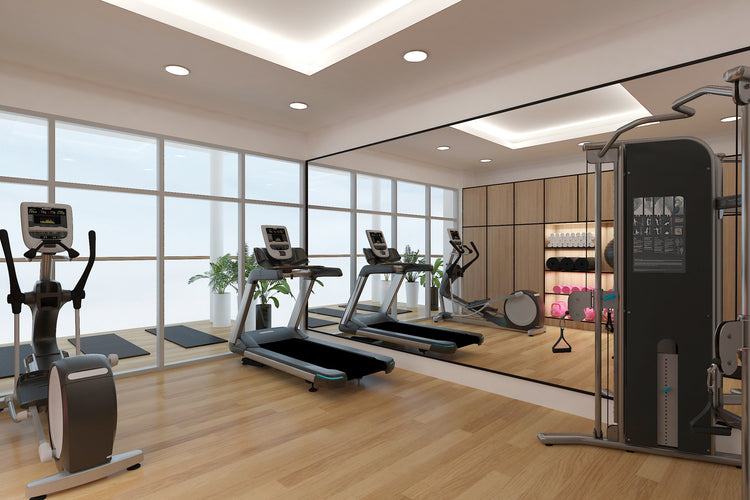Cultivating a love of movement and physical activity throughout life in children is the goal of many parents.
Unfortunately, less than 24% of Vietnamese children aged 6 to 17 get 60 minutes of physical activity a day , which is the recommended amount of time for children.
When children develop a passion for something like movement, they usually stick with it for a very long time.
To make sure your child gets enough exercise during adulthood, you need to lay the groundwork for them in their early years.
GET STARTED IN YOUR OWN HOUSE

The foundation you establish for young children is crucial to their overall well-being.
Denise Woodall-Ruff , MD, is a pediatrician and director of the Weight & Wellness Center at Stony Brook Children's Hospital, says, "Children learn from their parents' actions and important role models. other important aspects of their lives, including physical activity and exercise habits".
“Parents, caregivers, and teachers,” says Natasha Trentacosta , a sports medicine specialist in children and adults and orthopedic surgeon at Cedars-Sinai Kerlan-Jobe Institute in Los Angeles. are role models for young children, they look to these people to be examples of how to navigate their lives."
"Children who regularly see their parents participate in sports and fitness activities are more likely to do it themselves," adds Trentacosta. Electronics are increasing in young children and physical activity is decreasing.
Establishing healthy habits early will help young children develop better.
HOW TO INSPIRE CHILDREN
The key to inspiring a love of movement at an early age is to always focus on having fun.
Just like adults, children are less likely to get excited about something they don't like.
So if they're having fun, they'll probably want to do it more, giving young kids time to practice their skills and improve.
John Gallucci Jr. , is DPT, ATC and CEO of JAG-ONE physiotherapist said: “Every child has different personalities, some kids like exercise, physical activity but there are many The child has no interest in movement."
That's why it's essential to find activities that your child enjoys and turn them into activities that encourage them to be more active.
As a parent, make it a habit to get your kids active in your own home, including going for a walk with the family, dancing in the living room, climbing a tree in the garden, doing yoga or any other activity. where the whole family interacts.
This is both a way to strengthen family relationships and create conditions for children to be more active.
TIPS TO GET STARTED

Creating opportunities to be active every day is important for your child's physical, mental and emotional development.
It also helps set the stage for active participation in fitness activities as an adult.
Here are 12 tips to help you spark a love of movement from an early age in children.
GUARANTEE AGE RIGHT ACTIVITIES
Asking a 3-year-old to play badminton with an adult in the family is impossible. However, lowering the net and giving them a small racket with a large ball will be more suitable.
CONCENTRATION ON MOTOR SKILLS
Developing gross motor skills is very important for children, especially preschoolers.
These skills help children with balance, strength, coordination, and reaction time.
If you have toddlers and preschoolers, keep activities centered around kicking or throwing a ball, jumping, climbing, jumping over obstacles, or riding a tricycle.
Make sure they wear helmets and other protective equipment when cycling, and supervise them fully when they climb, use toys or moving equipment.
PROVIDE ACTIVE TOYS FOR CHILDREN
When choosing indoor and outdoor toys, include toys that require movement, such as children's balls, children's bicycles or scooters.Additionally, climbing toys are a great choice for toddlers, preschoolers, and school-age children.
Direct children to active toys instead of passive toys at home.
When your child asks for a new toy, ask them to return a passive toy in exchange for a new active toy.
PROMOTE FREE GAMES
Free play is how children learn about themselves and their surroundings. This is also a great time for them to exercise.
To keep young children active, encourage your child to be outdoors for 30 minutes to ride a bike, scooter, or play with balls and other outdoor toys.
PLAY WITH YOUR CHILD
If you play with your children more, they will be more interested in participating. Plus, it can be a time saver for working parents who want to exercise but struggle with being away from their kids outside of work.
TALK ABOUT CHILDREN'S EXERCISE
If you want to inspire your child's love of movement, you need to teach them what it means.
You should talk to your children about your sports and activities and their importance in your life.
TURN HOMEWORK INTO EXERCISE

Teaching kids to do chores achieves two things: your child completes a household chore, and they also get more active while doing it. If you have more than one child, turn housework into an exercise-related competition.
For example, toddlers and preschoolers can race to see who can throw clothes in the basket the fastest. Outside, compete in picking up trash in the yard or weeding in the garden. Designate a portion of the yard for each child (and parent) to clean. Whoever gets to the finish line first wins.
LET YOUR CHILDREN CHOOSE ACTIVITIES
Even young children know what they like and they certainly feel appreciated when you ask them about it. Let your child choose some activities or sports that they love and join the whole family.
TRY ORGANIZED SPORTS
When your kids are old enough, you might consider enrolling them in an organized sport.
American Academy of Pediatrics says most 6-year-olds are ready for simple, organized sports.
Group sports like soccer can be adapted to a child's age and level, allowing them to practice new skills.
INSTRUCTIONS OF PHYSICAL ACTIVITIES FOR CHILDREN

Centers for Disease Control and Prevention (CDC) recommends that children participate in 60 minutes or more of physical activity each day.
More specifically, the original American physical activity guidelines would provide a framework exercise guide for parents and carers so they can teach children more safely.
KIDS OF KINDLY
Children from 3 to 5 years old should be active during the day. The goal of movement at this age is to promote growth and development.
Children of preschool age should be exposed to lots of active play and activities. Diversity is key for children at an early age.
CHILDREN FROM 6 TO 17 YEARS OLD
Children and adolescents aged 6 to 17 years should engage in moderate to vigorous intensity exercise for at least 60 minutes a day.
This doesn't have to happen all at once. Because children can divide 60 minutes into several times a day.
For example, 20 minutes of soccer practice, 20 minutes of cycling, 20 minutes of physical activity at school.
Ideally, school-age teenagers should engage in aerobic, muscle-strengthening and bone-strengthening activities.
However, most 60 minutes a day should be aerobic or Cardio activity. These may include muscle and bone strengthening exercises such as resistance training three days a week.



